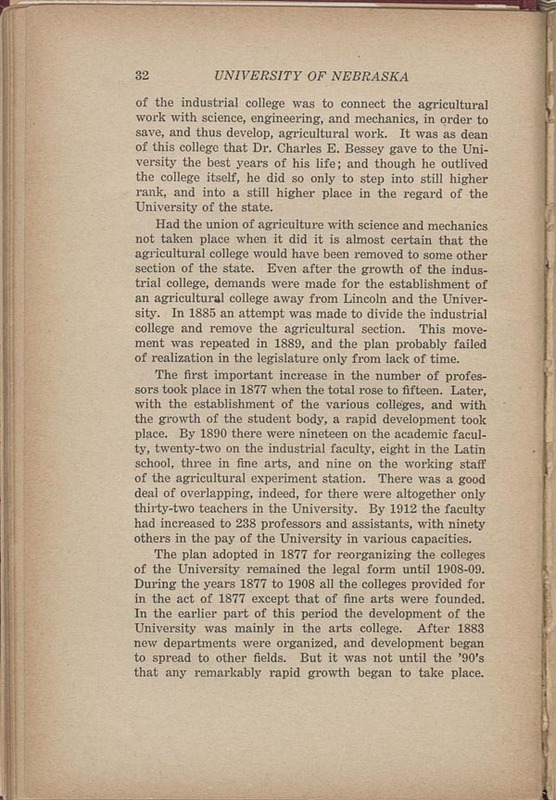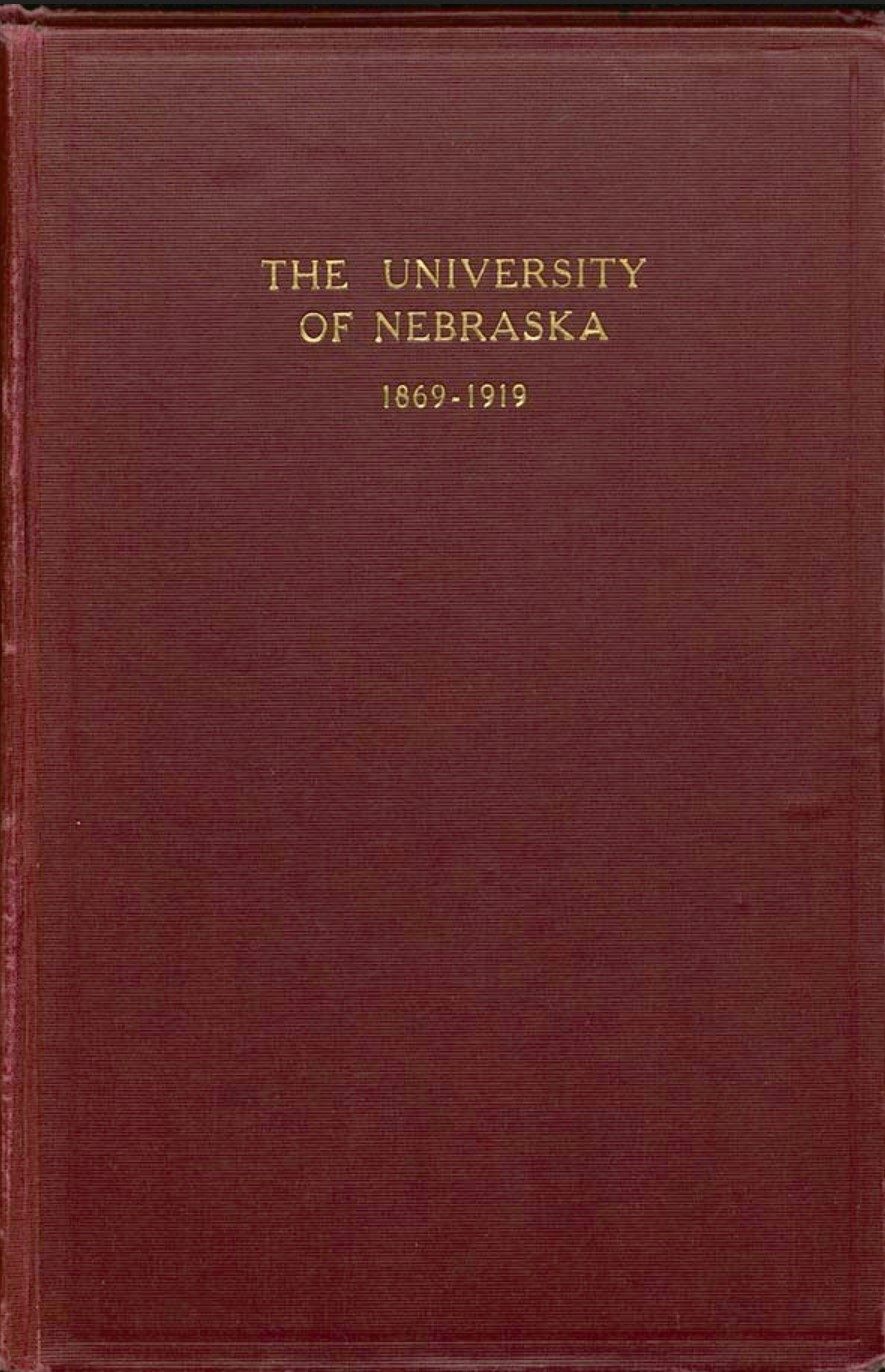036
Item
-
Title
-
036
-
Description
-
Semi-Centennial Anniversary Book: The University of Nebraska, 1869-1919
-
Transcription
-
of the industrial college was to connect the agricultural work with science, engineering, and mechanics, in order to save, and thus develop, agricultural work. It was as dean of this college that Dr. Charles E. Bessey gave to the University the best years of his life; and though he outlived the college itself, he did so only to step into still higher rank, and into a still higher place in the regard of the University of the state.
Had the union of agriculture with science and mechanics not taken place when it did it is almost certain that the agricultural college would have been removed to some other section of the state. Even after the growth of the industrial college, demands were made for the establishment of an agricultural college away from Lincoln and the University. In 1885 an attempt was made to divide the industrial college and remove the agricultural section. This movement was repeated in 1889, and the plan probably failed of realization in the legislature only from lack of time.
The first important increase in the number of professors took place in 1877 when the total rose to fifteen. Later, with the establishment of the various colleges and with the growth of the student body, a rapid development took place. By 1890 there were nineteen on the academic faculty, twenty-two on the industrial faculty, eight in the Latin school, three in fine arts, and nine on the working staff of the agricultural experiment station. There was a good deal of overlapping, indeed, for there were altogether only thirty-two teachers in the University. By 1912 the faculty had increased to 238 professors and assistants, with ninety others in the pay of the University in various capacities.
The plan adopted 1877 for reorganizing the colleges of the University remained the legal form until 1908-09. During the years 1877 to 1908 all the colleges provided for in the act of 1877 except that of fine arts were founded. In the earlier part of this period the development of the University was mainly in the arts college. After 1883 new departments were organized, and development began to spread to other fields. But it was not until the '90's that any remarkably rapid growth began to take place.
-
Rights
-
To inquire about usage, please contact Archives & Special Collections, University of Nebraska-Lincoln Libraries. These images are for educational use only. Not all images are available for publication.



